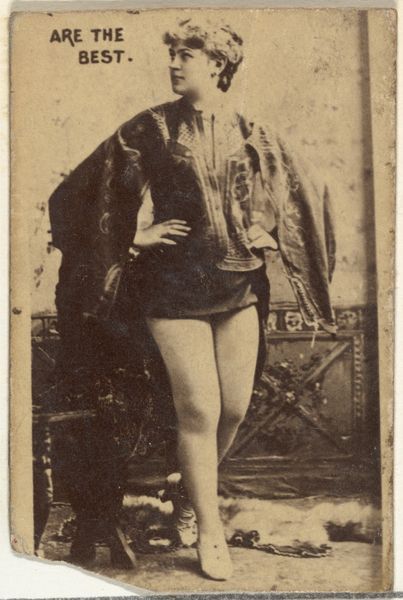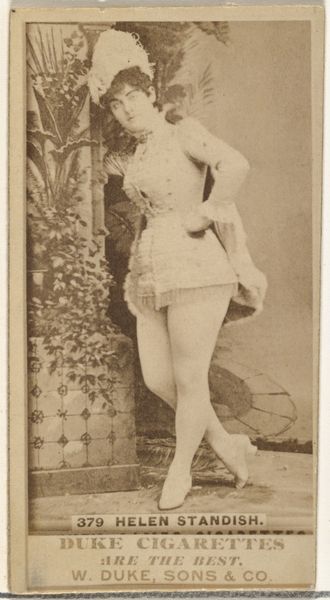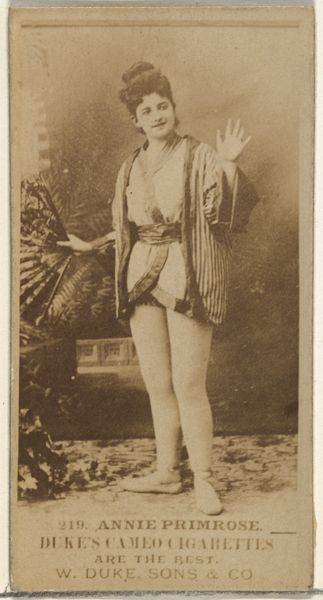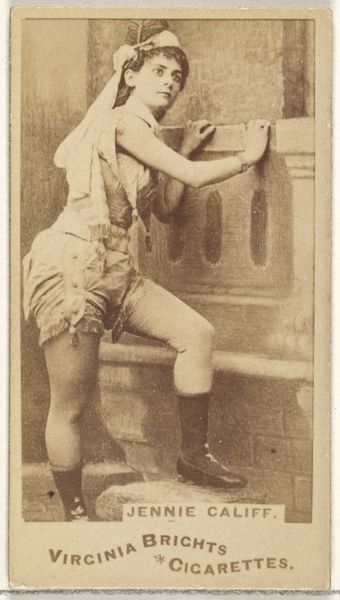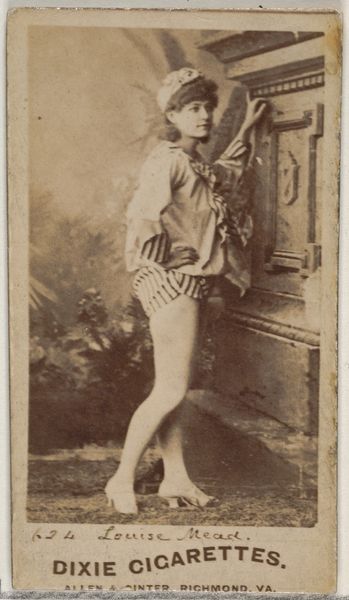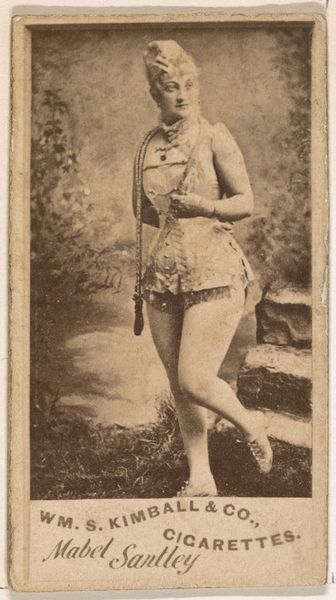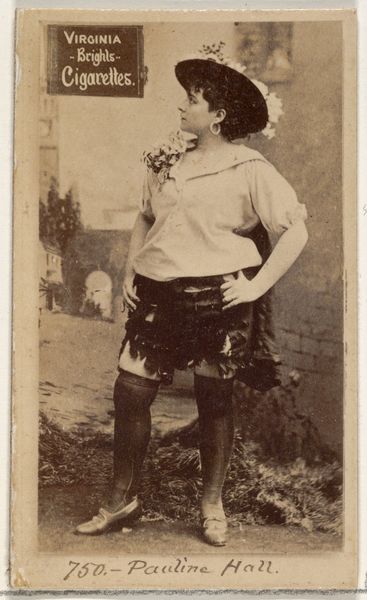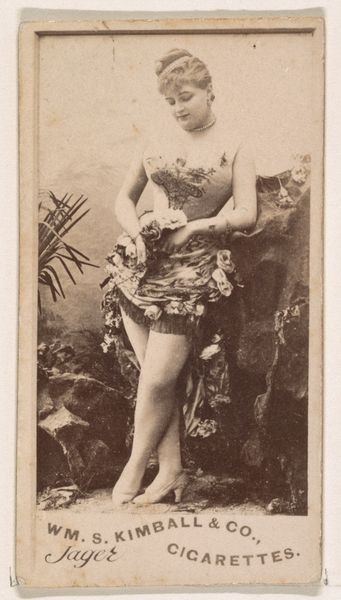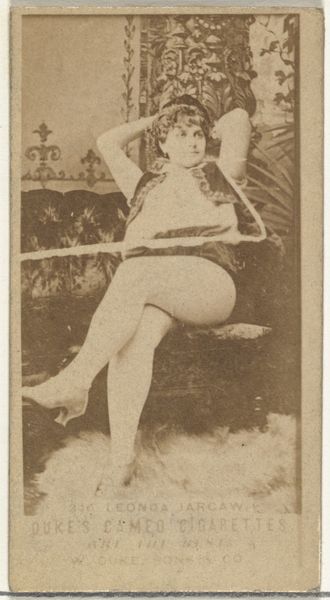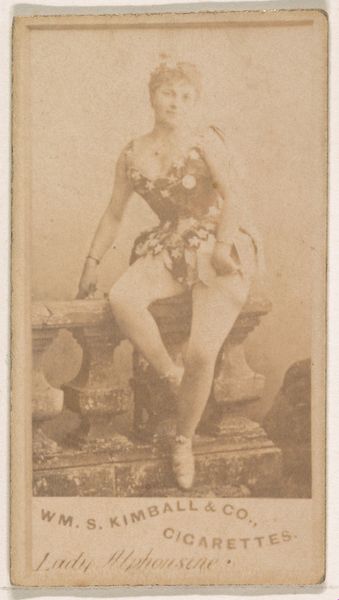
Card Number 328, Polly Winner, from the Actors and Actresses series (N145-5) issued by Duke Sons & Co. to promote Cameo Cigarettes 1880s
0:00
0:00
print, photography
#
portrait
# print
#
photography
#
coloured pencil
Dimensions: Sheet: 2 11/16 × 1 3/8 in. (6.8 × 3.5 cm)
Copyright: Public Domain
Editor: So, this is "Card Number 328, Polly Winner," part of the "Actors and Actresses" series from the 1880s, created by W. Duke, Sons & Co. It's a print, likely based on a photograph. It feels… suggestive, and I'm intrigued by its existence as a cigarette advertisement. What stands out to you? Curator: The pose and setting strike me as highly deliberate. Polly Winner is staged amongst flora, evoking classical depictions of nymphs or goddesses. However, her somewhat unconventional garb and knowing gaze, combined with the commercial purpose of the image, transform this established symbolism. Editor: How so? What kind of symbolism do you mean? Curator: Consider how the cigarette card appropriates the aura of established art genres—portraiture, genre painting—and entwines it with commerce. It reflects a cultural fascination with both celebrity and eroticism, offering a readily accessible form of visual culture that acts as a vehicle for subliminal and cultural cues, much as the sacred images in a church function. The composition is consciously mimicking high art for consumption, using recognizable imagery and tropes. Editor: So it’s almost a… sacred image for a very unsacred product? I never considered cigarette cards in that way! Curator: Precisely. And how does knowing the function of the art—advertising—alter your view of the central figure, Polly? Editor: I guess I see her less as an individual and more as a symbol of desire, carefully constructed to sell a product. The context changes everything. I now understand how potent visual culture can be. Curator: Indeed. It is interesting how something so small, like this card, reveals so much about cultural aspirations and the mechanics of influence at play in popular visual language.
Comments
No comments
Be the first to comment and join the conversation on the ultimate creative platform.


